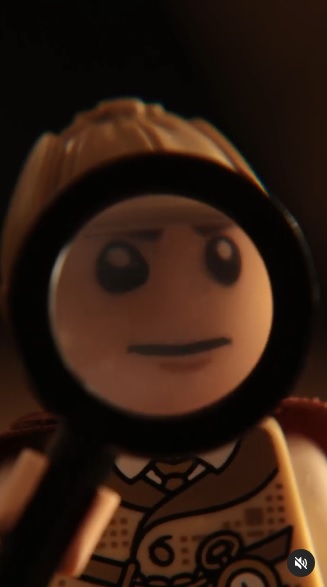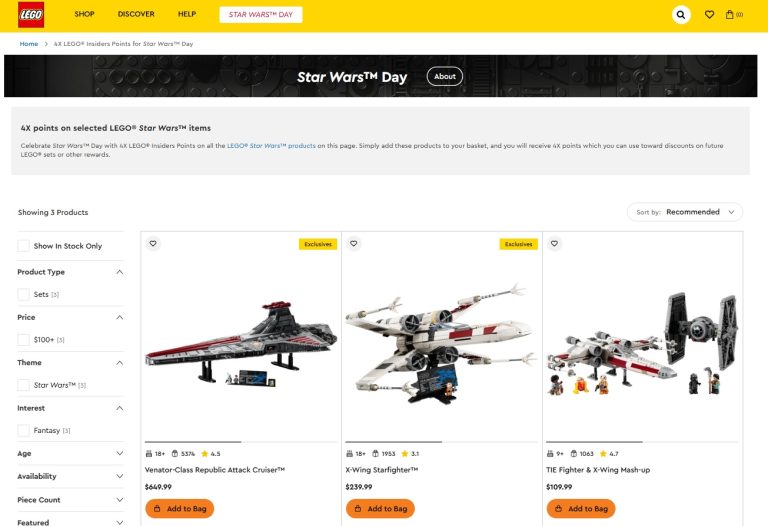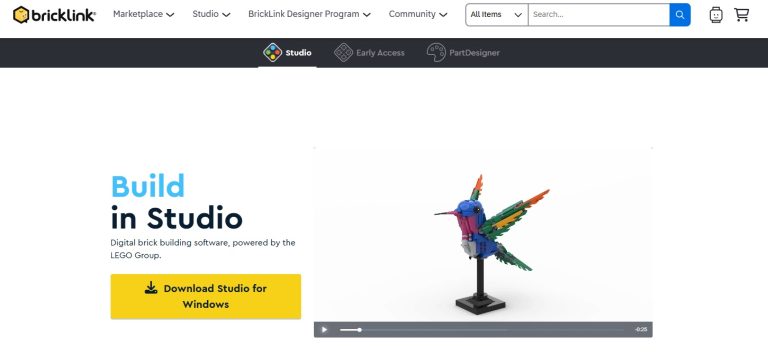This article was written by Jeremiah A. – Guest Contributor Writer. Reviewed and edited by Toys N Bricks.
Besides the fun of building or playing with your LEGO sets, you can also make money from them. Say hello to the LEGO investment world, where you find the most iconic pieces ever made to flip them for profit. It’s an exciting opportunity for LEGO collectors and investors alike.
Research from Victoria Dobrynskaya shows that LEGO investments between 1987 and 2015 yielded at least 11% average returns. This figure beats even large stocks, bonds, and alternative investments. While LEGO investing is promising, there are risks like market saturation, set rereleases, and even storage costs. I’ll consider all these as we proceed.
Tip: Subscribe to the free Toysnbricks newsletter subscription. You’ll get LEGO news, new product updates, sales & deals updates, creations and reviews right in your inbox. Be sure to also join in for LEGO discussions at Toysnbricksforum.com. (:
Shown below is LEGO 40155 Piggy Bank.

Becoming a LEGO Collector: What You Need to Know About Investing in LEGO Collections
Support Toys N Bricks
Before we continue further with the article, we like to mention that if you like the work that Toys N Bricks does, you can always support us by buying LEGO and other products from these merchant links: LEGO Shop at Home (USA | Canada | UK | Australia), Amazon.com USA, Amazon.ca Canada and Amazon.co.uk UK.
Disclosure Integrity & Transparency: As a LEGO Affiliate, Toys N Bricks earns from qualifying purchases made at LEGO. Thank you for your support and for making your purchases through Toys N Bricks. Every little bit helps pay for our bills to run the site (including server infrastructure & software costs, license fees and more).
Toys N Bricks is a participant of the Amazon.com, Amazon.ca and Amazon.co.uk Associates program which provides advertising fees for sites. As an Amazon Associate, Toys N Bricks earns from qualifying purchases.
What is LEGO Investing?
LEGO investing involves purchasing LEGO sets to resell them for profit. The resale often does not occur immediately; instead, you may have to wait for the set’s value to appreciate. This period could take years or even decades if you are a LEGO collector.
We know that LEGO sets are typically mass-produced. However, that doesn’t mean they’ll be produced continually or be on the LEGO shelf forever. Due to discontinuation, retirement, or even rereleases, some sets, especially the most iconic pieces, become rare over time. This scarcity makes them even more valuable than their initial retail price.
As an investor or collector, you could identify these pieces, get them, and hold them for years. A prominent example is the 10179 Ultimate Collector’s Millennium Falcon (2007). This set originally retailed for less than $500 when released. Now, a new sealed set can fetch thousands of dollars in the secondary market.
Picking sets for investments as a LEGO collector is crucial. Such sets must have the potential of being valuable over time. Unfortunately, not all LEGO sets remain as valuable as their initial release. Most lose their value as new sets are added.
Why Do LEGO Sets Appreciate?
The factors that cause LEGO sets to appreciate include the following:
- The LEGO life cycle
- Scarcity
- Enduring brand appeal for LEGO
- Nostalgia
- Adult fan of LEGO
- The secondary market ecosystem
The LEGO Life Cycle
Every LEGO set typically goes through the following stages: release, retail availability, retirement, and the secondary market. The LEGO hard-to-find sets get discontinued in a year or a few years if such sets are released simultaneously.
For most LEGO sets, the retail shelf life is about one to three years. However, some sell out quickly. A prominent example is the 2020 LEGO Star Wars 77904 Nebulon-B Frigate. The set lasted for a few days before running out. Some sets last for only minutes before being sold out.
As for production lifespan, most LEGO sets last for 18 months or a few years. The duration typically depends on popularity, theme, and even size.
Some of the longest-running sets of all time include the following:
- 10214 Tower Bridge: Production ran for 3021 days
- 10188 Death Star: It remained in production for 2713 days
- 31313 Mindstorms EV3: Production ran for 2518 days
Shown below is LEGO 31313 Mindstorms EV3.
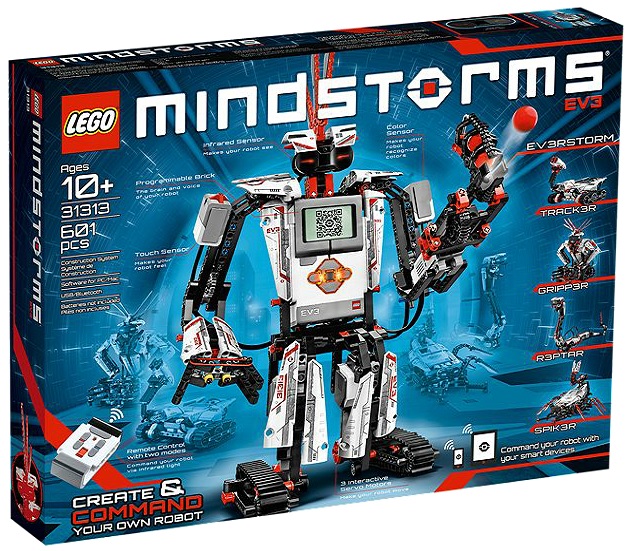
Set Retirement
Consider the end of production, the end of sale, and the limited lifespan. LEGO typically uses the “Retiring Soon” status on sets it plans to retire soon. This approach gives customers, including LEGO collectors, a chance to purchase them at the original retail price. Afterwards, you’ll have to get the LEGO set in the secondary market.
Some of the reasons LEGO retires its sets are as follows:
- Sales performance: LEGO typically retires sets that perform poorly early. Conversely, sets that perform well may be kept for much longer than the typical production date.
- Theme rotation: LEGO will retire old sets if it introduces new themes. The new products are meant to maintain fan interest. Prominent examples are the Star Wars and Harry Potter sets.
- Special editions and seasonal releases: Some sets, like the LEGO Halloween release, typically last for a shorter time than what you’d normally get. The reason is that such sets are seasonal. The same goes for special edition releases.
- Production capacity: LEGO does not have a factory that produces an infinite number of sets. It is limited. As such, LEGO has to prioritize which sets to produce and which ones to retire.
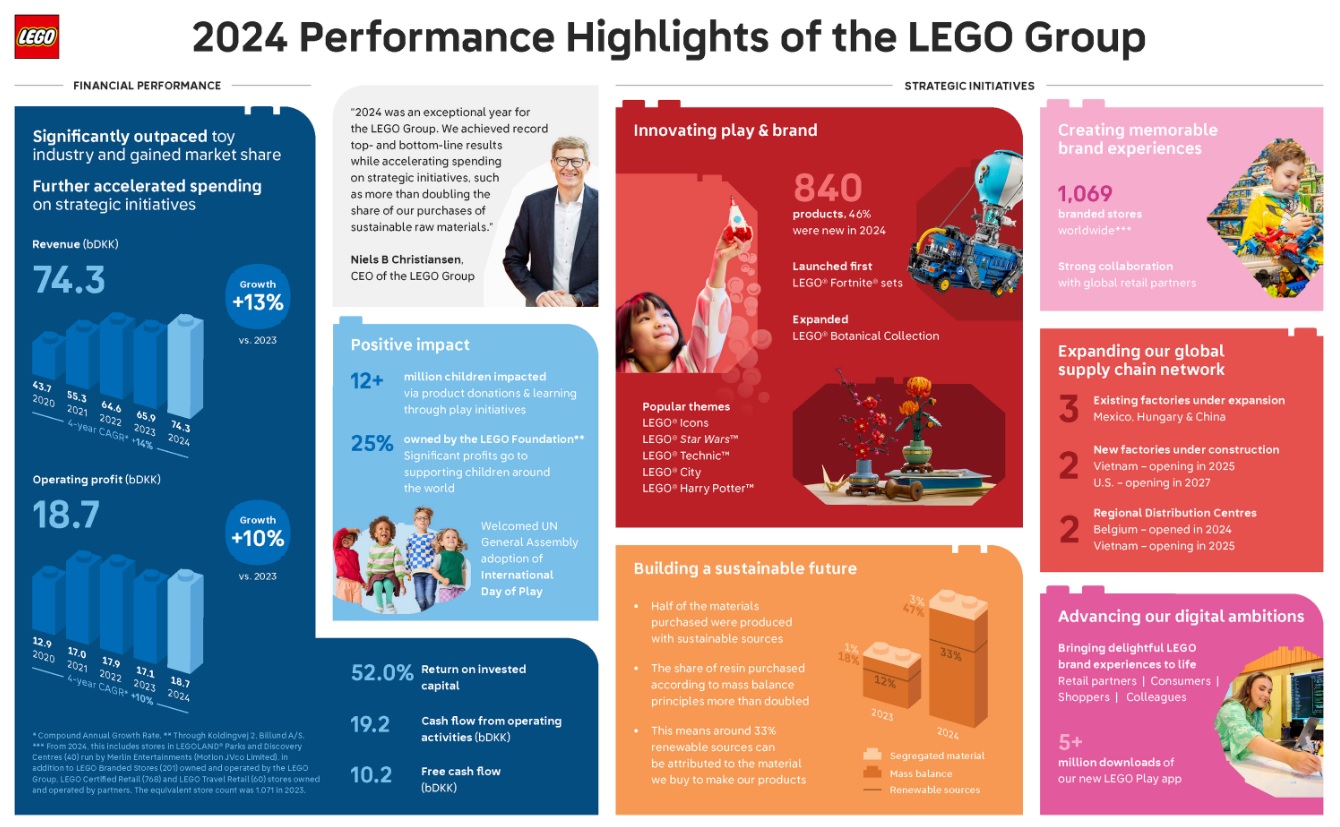
The Secondary Market
The secondary market refers to any platform or trade that involves LEGO products outside the official LEGO retail site. These products are often purchased on the official LEGO retail site or official retailers and sold on these platforms.
Collectors, adult fans, and people looking for specific parts or sets drive the secondary market. Products you’ll find here include sets, minifigures, and parts.
The secondary market is also where you’ll find retired sets. When available, such sets sell for high prices. The New York Times reported that some of these sets command prices as high as $16,846 in the secondary market.
As a LEGO collector hoping to flip LEGO products, you must know how the secondary market operates. You must also know how much your LEGO products will be worth in the market.
Some key factors that influence the prices of LEGO products in the secondary market include the following:
- Rarity and retirement status: Sets that are typically expensive are those retired a long time, produced in limited numbers, and even promotional sets. A simple rule of thumb I recommend you keep in mind is that the rarer the item, the more likely it will be expensive.
- Condition: If you want to get the best value for your LEGO product, then you must ensure it is in mint/sealed condition. That means you’ve never opened the box. Used items can be equally valuable, but that depends on completeness, the presence of instructions, and the availability of the original box.
- Demand: Some of the themes I find to be in high demand include Star Wars, Harry Potter, and modular buildings. Even specific desirable minifigures can drive demand.
- Seller reputation: The more reputable you become, the more leverage you’ll have to sell your LEGO items for a high price.
The Adult Fan of Lego (AFOL) Community
This community gives value to the LEGO secondary market. It is the primary reason why LEGO sets are valuable investments even long after LEGO officially discontinues them. For that reason, you’ll have to learn how to navigate this community when reselling your LEGO purchases.
AFOLs are the primary consumers buying LEGO products in the secondary market. Often, they don’t mind paying premium prices for valuable sets that are rare or iconic. Some buy as collectors of old, vintage-like LEGO products. Others buy to complete their custom construction or to own a nostalgic piece.
I could go on listing the reasons, but that isn’t the key. The key is identifying which products are in high demand and where to find buyers. For example, most collectors go for specific LEGO themes like Harry Potter, the Star Wars Ultimate Collector Series, and modular buildings.
You’ll also get demand for custom and displayable sets. For many collectors, it’s all about displaying their rare finds or LEGO sets to the public. Such sets include large Technic models and detailed architectural infrastructure like the Colosseum.
If you want to find active AFOL communities, then I suggest social media groups, YouTube, blogs, and even fan sites. The members typically share reviews, price trends, news about soon-to-be-retired products, and even building techniques. These groups are places for direct investment as a LEGO collector.
Note that the sole purpose of joining these communities is to learn about what the majority like and what they are willing to pay for. This knowledge is essential to your success as a LEGO investor.
Shown below is LEGO Ideas Project Creation Community – Greendale Community College by bulldoozer21. This creation achieved 10 000 supporters back in May 2020.

Building Your LEGO Portfolio
Building an investment portfolio as a LEGO collector boils down to identifying valuable LEGO sets. One way I recommend is the adult fan of LEGO communities. Here, you’ll know the most talked-about pieces worth buying.
To find value, you must research thoroughly. I wish there were an easier way, but there isn’t. Thorough research takes time, especially if you are just starting.
A few factors I want you to consider when building your investment portfolio as a LEGO collector are as follows:
Theme Popularity and Longevity
What you need here aren’t themes that are just popular. Such themes must also endure for a long time. In other words, they must have good production runs, stellar sales runs, and popularity in the secondary market.
Prominent themes with massive secondary market value include the following:
- Back to the Future: This set is one of the most iconic LEGO products ever made. There aren’t many out there. Some, like the DeLorean Time Machine (21103), are highly sought after, selling for many times their original RRP.
- Harry Potter: Harry Potter is still one of the best-selling LEGO sets of all time. It has quality and diverse sets under the theme. As such, both kids and adults love the collection.
- Star Wars: Star Wars is never a letdown when it comes to being a LEGO collector. It is both iconic and vintage for many. Most importantly, sets in the Star Wars theme make for stellar display art pieces. A prominent set in Star Wars is the Millennium Falcon.
Shown below is 18+ LEGO Icons 10300 DeLorean Back to the Future Time Machine.

Go for Exclusive Sets with Limited Production
Sets in this category include LEGO Shop Exclusives, like the Rivers Steamboat and The Lord of the Rings: Rivendell. If you are into more modern themes, I recommend the Avengers Tower, the NASA Artemis Space Launch System, and the Orient Express Train.
LEGO store exclusives are sets that are only sold at the official LEGO stores/shops: USA | Canada | UK | Australia. They have limited availability and are often highly sought-after.
Other factors you should consider include unique minifigures and promotional sets. Promotional sets are often special, limited-edition production pieces. They are not made for direct purchases or sales on official platforms. Instead, you can get them via the following ways:
- As gifts with purchases or
- Through retail partners
- Gift set at special invite-only events
The LEGO Fire Engine 4000040 set is one of the best promotional sets made. LEGO made only 300 of them, with some being worth as much as $7,000 today in the secondary market.
VIP sets also count as promotional sets. They are exclusive and typically offered as part of a reward structure for VIP LEGO collectors.
Shown below is LEGO Fire Engine 4000040 Insider Tour 2023 Special Set.
Upcoming Releases and Retirement
For LEGO, sets that are about to be retired mean they’ll be out of production soon. Such sets can be investment pieces, as you’ll be among the last few to grab them at the official retail prices. Afterwards, the set will only be available in the secondary market, where supply, demand, and other factors can give you a much higher resale value.
Retired sets become rarer, especially those that are still sealed and in mint condition. They undoubtedly have high resale values once listed in the secondary market.
Staying ahead of new releases can allow you to grab launch promotions. These promotions list the new LEGO sets at lower prices than their original retail value. You might also get gifts alongside your early purchases.
For someone looking to flip LEGO sets, then, I recommend you keep up with new releases and retirement announcements. You can bookmark the official LEGO site or keep up with iconic pieces on the Toysnbricks official website.

Target Audience
Although LEGO sets appeal to different age groups, you must be clear about who you hope to sell to in the secondary market. Again, my recommendation is to consider the adult fan or LEGO community as your primary target audience.
People in the AFOL communities are typically willing to pay a premium for LEGO sets, unlike parents who just want something for their kids. When targeting them, I recommend focusing on UCs, modulars, and complex builds. These typically challenge adult enthusiasts more than standard children’s playsets. They also have an appealing visual appearance for displays as art pieces.
Large Sets
Sets like the Eiffel Tower and the Titanic are large LEGO sets. They typically have a higher potential for good secondary market performance. However, they require much larger capital and storage if you hope to keep them for a while before selling.
You can consider some of the biggest sets of all time if you want a diversified portfolio. While at that, I recommend large sets with minifigures as well. The minifigures help increase the secondary market retail value.
Remember, these sets must be in pristine condition to get the best value out of them. If possible, keep them sealed in the original LEGO box. The building instructions should also be available. Buyers typically consider such information when purchasing LEGO pieces in the secondary market.
Shown below is 18+ LEGO Icons 10307 Eiffel Tower Paris France.
![]()
Discount Sales
One way to minimize cost and maximize your potential profits is to buy products at a discount. Periods I recommend you look out for include the following:
- October to December
- LEGO Insiders weekend in November: This event often features early access to Black Friday items, double points on purchases, and even Gifts with Purchase (GWP).
- Star Wars Day (May 4): LEGO typically brings discounts to its Star Wars sets on this day.
- Black Friday and Cyber Monday
- Clearance sales
Note that heavy discounts on some LEGO items might signal an oversupply. Buying such items may not be profitable in the long run. As such, ensure you do thorough research on any discounted item before you purchase it.
Shown below is the LEGO Star Wars May the 4th Be With You banner. We have coverage of this year’s 2025 LEGO May the 4th Offers over here.

Diversifying Your Portfolio
One of my top recommended risk management approaches as a LEGO collector is to diversify your portfolio. This approach is not just diversifying the themes alone. Other crucial areas must be diversified if you want to maximize your profit.
The risks you must consider when diversifying your portfolio include the following:
- LEGO might reproduce the sets in the future
- Other LEGO collectors and investors may saturate the market, creating oversupply
- LEGO collector and AFOL communities may shift their demands to other sets
That said, here are my recommended strategies to diversify your LEGO collections when investing:
Try Different Themes
If you have the capital, then I highly recommend you get sets from different themes. You can get sets from Star Wars, Harry Potter, Technic, Icons, etc. Seasonal themes like Halloween and Christmas may also come in handy during their respective seasons.
Shown below is 18+ LEGO Harry Potter 76444 Diagon Alley Wizarding Shops. This set was released in January 2025.
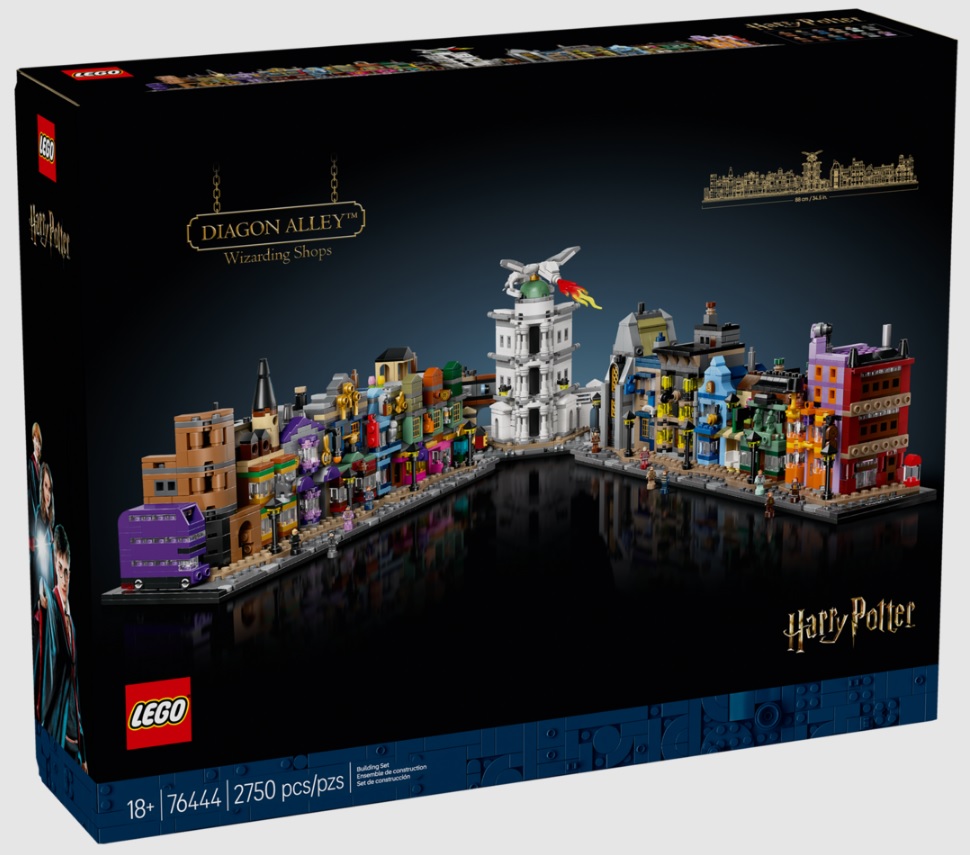
Release Schedules
For this strategy, you can start by preordering upcoming limited editions with potential. Then, add LEGO sets about to retire to your portfolio. Good classic and vintage sets will also make a fine addition to your portfolio.
Size Difference
While large sets typically have the most potential, it is prudent to diversify with small sets, especially minifigures. The minifigures should be unique if you want the most out of them. Their rarity will make them more valuable than other common minifigures.
Unless the demand is high, avoid mid-sized LEGO sets. They typically have slower appreciation than the large or small, unique sets.
For the large sets, I recommend getting a few of them. The reason is that these sets are often expensive. They also take up storage space.
You can get multiples of the smaller, valuable sets. Sometimes, even the smallest and cheapest LEGO sets end up giving the most returns. A prominent example is the 1584 Knight’s Challenge castle set. The original set sold for $19.99 during retail. However, it ballooned to over $6,000 in value in the secondary market.
Continuous Market Survey
Keep an eye out for the market. New trends may emerge, and new favorites might enter the market. Try to be among the first to bring the new sets to the market when people’s interest is high.
My Recommended LEGO Collector Toolkit for Investing in LEGO Sets
I’ve expounded much on the buying strategy in previous sections. Now, what’s left are the storage strategies and the selling strategy. Both are critical in getting the highest possible value from your LEGO collection or sets.
Storage Strategies
When it comes to storage, LEGO sets that are new and still sealed in their boxes typically have the highest value. The reason is that such sets have not been used, not even opened. It is like buying directly from the LEGO Shop, only this time at a much higher price than the original retail price.
If you need to open a new set you bought, then ensure you leave everything in pristine condition. LEGO sets are durable on their own, but try to avoid having scratches or dents on sets you want to sell.
For used purchases, go for sets with minimal-to-no scratches and dents before storage. If possible, get the original boxes as well.
Most LEGO sets take one to two years, and even more to appreciate significantly. As a collector hoping to sell off your collection, you must make adequate preparations for storage. Things as common as sunlight might cause fading on your sets when left exposed.
Tips on Storage
Here are a few of my best tips on storing your LEGO sets for resale:
- Store your sets in a cool, dry place. The storage place should be away from direct sunlight. It should also have controlled temperature and humidity. Extreme conditions may cause bricks to warp or become brittle.
- Use protective packaging like plastic storage containers with seals. This packaging will provide an extra layer of protection against physical damage, including crushing. Bubble wrap or acid-free tissue is a good alternative for plastic storage. However, use them for less valuable items.
- Airtight containers might be handy in keeping dust and debris away from the LEGO sets.
- Avoid stacking too many packaging boxes on top of each other. This approach will protect your sets against crushing. If it is necessary to stack your boxes, then I recommend placing cardboard inserts between the boxes. Also, stack boxes of similar sizes for even pressure distribution.
- Keep the storage area clean as regularly as possible. The area should be free from dust as well.
- You can flatten the original boxes for easier storage. However, ensure you keep the folds intact.
- Building instructions should be stored separately. Keep them in binders or folders and organize them properly for easy identification when needed.
When it comes to storage, you have to consider the cost of storage materials and preservative equipment or materials. The storage space should also be a top priority. I recommend getting a space where movement isn’t frequent. The basement is a good choice. If possible, get a storage container in a secure location.
Besides space and materials, insurance is also valuable when investing in LEGO collections. That is especially true for high-value sets. These sets may require separate insurance coverage from your general insurance coverage for the space.
Shown below is the BYGGLEK LEGO Storage Solution Collection from IKEA back in October 2020.

Holding Strategies
Significant appreciation for a LEGO set typically starts two or three years after retirement. Some sets may see a quick bump in price immediately after retirement. That bump is commonly referred to as the retirement pop. It doesn’t last. Hence, I don’t recommend selling immediately because you saw a slight price bump.
Experts often suggest holding your LEGO sets for eight to nine years after their retirement. This period is typically when most sets have substantial appreciation, primarily because of the lower supply and high demand for classics or timeless sets.
My recommendation is to watch the market closely. Some sets might become significantly valuable even before getting to eight years.
Map out how much profit you expect from your sets. If the market moves towards your mark, then I don’t see any reason why you shouldn’t sell.
The holding period will ultimately depend on two things:
- Are you a short-term flipper?
- Are you a long-term investor?
Both approaches are risky. Here’s a table comparing both approaches and their risks.
| Investment Approach | Risk |
| Short-term flipping | ● Typically has high competition and high supply
● Profitability primarily depends on initial buzz or hype ● Prices may drop quickly if LEGO decides to rerelease or restock ● The profit margin is typically small, even with a high turnover ● There is a risk of being left with unsold inventory |
| Long-term investment | ● There is market demand uncertainty
● Liquidity might take longer than short-term flipping ● Capital is tied up until you sell off the sets ● Collector interests may change, resulting in a loss of value |
The Exit Strategy
When it comes to selling your LEGO sets, a few considerations are crucial. These include the selling platform, the fees, logistics, presentation, management, and tracking.
Some platforms may handle the logistics and tracking for you. However, these often come with extra costs.
That said, here are some strategies I recommend when you are about to sell:
- Find platforms that have your target audience. eBay and Facebook Marketplace are popular for reselling items.
- Advertise on several platforms if you have the means.
- Consider the platform fees, processing fees, and other charges that may apply on the selling platform.
- Try to find buyers within your locality first. That way, you’ll cut down on shipping and tracking costs.
- Share good photos and an accurate description of your LEGO sets.
- Consider shipping costs if you have to ship outside of your state.
- Provide prompt responses to inquiries from potential buyers.
- Get reviews from satisfied buyers for future sales. These reviews will boost your reputation on the selling platforms.
Shown below is the LEGO Bricklink logo. Bricklink is another secondary marketplace that you can sell your LEGO sets.

The Drawbacks of Being a LEGO Collector for Investing
Despite the potential for significant returns, LEGO investing remains risky, like every other business. There is no foolproof guarantee of profits. A set may appreciate today and lose its value tomorrow if there’s a rerelease or new release.
Besides that, you also have the risk of theft. LEGO set theft is a growing menace. In June 2024, BBC and other reputable news platforms reported over 2800 stolen LEGO sets. Such events will bring losses. Even when the sets are recovered, the probability of having damage to the set is high.
There is the problem of low or slow liquidity when it comes to LEGO investing. As a LEGO collector, it is typically much easier to get items than to sell them off. LEGO sets aren’t like bonds or stocks with high liquidity. Instead, you’ll typically spend time finding a buyer who is willing to pay the right price.
The process of finding a buyer gets more challenging if you have a niche set. Buyers are often few.
Counterfeit LEGO sets are out there. So, you have to be extra careful when buying from the secondary market. I do not recommend buying from the secondary market unless you have a trusted seller. Even so, try getting sealed sets first. Only go for open ones if you can’t find the sealed ones.
Consider the risk of damage during shipping. Such damages may necessitate returns from your buyer, resulting in a loss. Even if you succeed in reselling the set, the market value will not be as high as before.
The last drawback of being a LEGO collector and investor is the high competition. The competition makes it more challenging to find valuable LEGO sets. It also makes it challenging to sell sets quickly.
When the competition is too much, it can lead to a loss of value because of oversupply. However, you can mitigate its effects by going for niche and rare items.
Making LEGO Investment Part of Your Overall Investment Portfolio
My advice on this is that you should have a passion for LEGO sets and not just a knack for selling. Most sets, like the Harry Potter sets or the Star Wars sets, are not just fun to own but nostalgic to many enthusiasts. To some, these sets are reminders of their childhood memories.
Investing in LEGO collections can be part of your overall portfolio. You can manage it like every other business. But consider the time it takes for the sets to appreciate and account for that in your overall business strategy.
Shown below is 18+ LEGO Icons 10294 Titanic.
![]()
Conclusion
LEGO investing can yield profit both in the short term and in the long term. However, both approaches come with risks. You also have to consider which LEGO sets to invest in.
Thorough research, a diversified buying strategy, and recognition of the risks are must-haves as a LEGO collector. Join communities of fellow LEGO enthusiasts to get the latest trends, market value, and even potential buyers.
Remember, always go for rare sets, exclusive and limited production pieces, and even promotional items that aren’t sold at the LEGO shop. These sets tend to appreciate significantly in value.
This article was written by Jeremiah A. – Guest Contributor Writer. Reviewed and edited by Toys N Bricks.
—
Toys N Bricks has lots of other LEGO Resource Articles available at our LEGO Resources Guide Center.
Support the work of Toys N Bricks by buying LEGO from LEGO Shop at Home (USA | Canada | UK | Australia), Amazon.com USA, Amazon.ca Canada and Amazon.co.uk UK.
Toys N Bricks is a participant of the Amazon.com, Amazon.ca and Amazon.co.uk Associates program which provides advertising fees for sites. As an Amazon Associate, Toys N Bricks earns from qualifying purchases.


